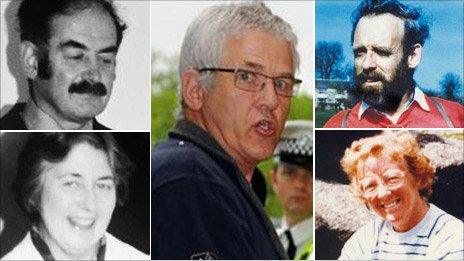Final sentence due for historic Carmarthen court
- Published
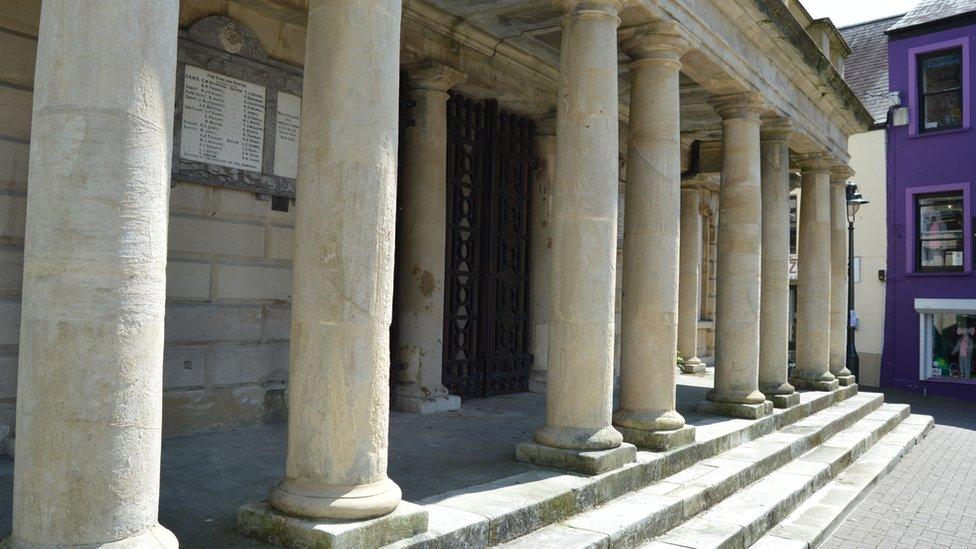
If walls could talk, the iconic Guildhall in Carmarthen would have some colourful stories to tell.
The court building has been at the centre of some of the most momentous events in Welsh history during its 250-year lifetime.
Gwynfor Evans' landmark victory as first Plaid Cymru MP was announced from its balcony in 1966 - an event which changed the face of politics in Wales forever.
And the court played a pivotal role in the Agrarian 'Rebecca Riots' in 1839-43 when some of the ringleaders were sent to transportation directly from there.
Carmarthen also attracted the national spotlight when Ronnie Harries, one of the last men to be hanged in Wales, was sentenced to death there in 1953 after murdering his relatives Phoebe and John Harries at their home, Derlwyn Farm, in the hamlet of Llangynin.
But despite this rich history, the future of the Grade II listed building looks uncertain.
On Friday, magistrates will retire for the final time as it is one of 10 Welsh courts earmarked for closure by the Ministry of Justice.
For those who have played a part in the court's story, its closure raises serious concerns about the impact it will have on the town.
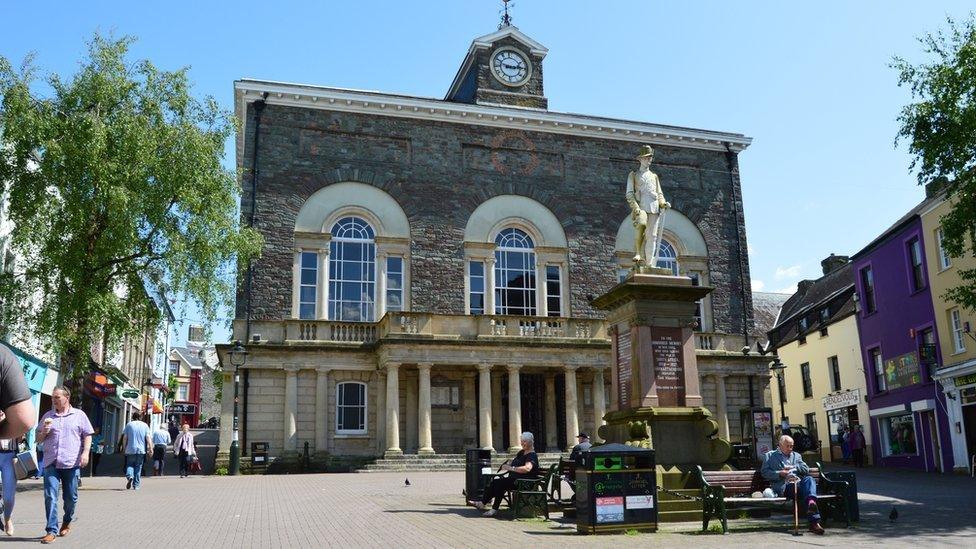
Carmarthenshire councillor Alun Lenny, who is also a former BBC and Carmarthen Journal reporter, recalls: "As a journalist in the 1970s I sat through literally thousands of cases in the Guildhall over a period of 30 years, for the Journal, TV and radio.
"I remember a time when the magistrates sat for at least two full days a week and the crown court for a week or two every month.
"The crown court in the Guildhall is like a miniature House of Lords and is an iconic building smack in the centre of town.
"It is one of Carmarthen's most prominent buildings and I really hope it can be turned into a heritage and history centre and isn't lost to the people of Carmarthen."

Court closures in Wales- full picture
The phased closure will see nearly a fifth of all courts and tribunals in England and Wales shut to save money.
Courts in Brecon, Bridgend, Neath Port Talbot, Pontypridd and Wrexham are to close completely while Dolgellau, Holyhead and Llangefni will shut when alternative venues are found.
Carmarthen's civil, family, tribunal and probate hearing centre is being retained, while crown court cases will be moved to Swansea.
Defendants, witnesses, magistrates and court staff in magistrates cases will be required to travel 16 miles to Llanelli instead of Carmarthen for cases in a move that has raised concerns over safety.

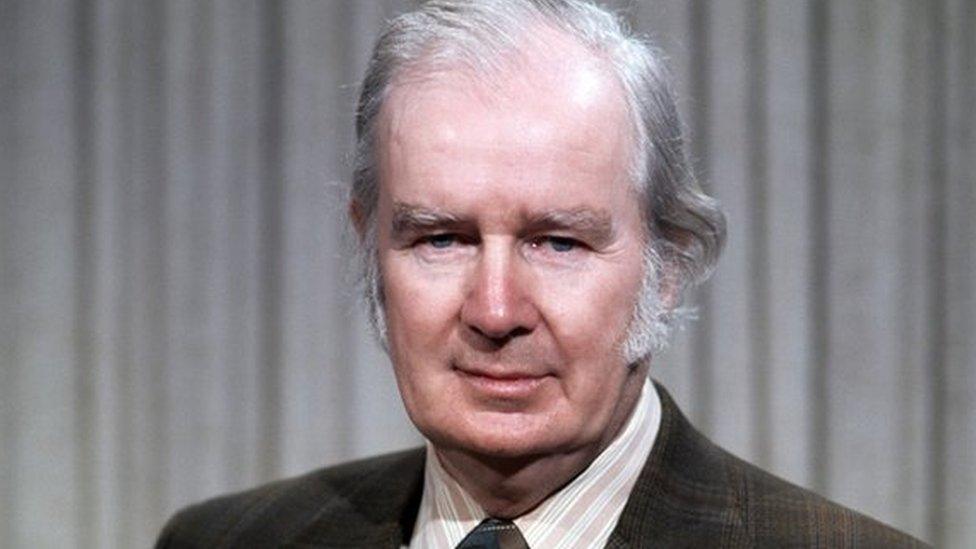
Gwynfor Evans, who became Plaid Cymru's first MP in 1966
The court's role in local history is indisputable but in 1966, the national spotlight shone there when Gwynfor Evans won the Carmarthen by-election.
He held the seat twice, eventually losing it in 1979, and also threatened to starve himself in the cause of Welsh language television, leading to the foundation of S4C.
About 2,000 people gathered in the square outside Carmarthen's Guildhall for his shock victory.
'Voodoo ceremony'
One of them was The Reverend Towyn Jones, president of the Carmarthenshire Antiquarian Society and a local historian who moved to the area 41 years ago.
He said: "The atmosphere was electric at times, people were working themselves up into a frenzy and chanting his name. It was pretty intense, like being in some voodoo ceremony."

Welsh Language Society members Sion Jobbins and Geraint Rhys Evans pictured at Carmarthen court after being found guilty of criminal damage in the 1980s
Mr Lenny also recalls covering one of the court's most high-profile cases in 1978 when Rhodri Williams and Wynfford James from the Welsh Language Society or Cymdeithas Yr Iaith Gymraeg were tried for conspiracy to damage a TV transmitter during their campaign for a Welsh TV channel.
"The place was packed, with hundreds of demonstrators both in and outside," remembers Mr Lenny.
"The court case resulted in the pair being imprisoned but there were also numerous contempt of court charges throughout as people interrupted proceedings or banged on the windows from outside."
Mr Lenny was present at the remand hearing for the prolific burglar and serial killer John Cooper, from Milford Haven, who was convicted in 2011 after a cold case review linked him to the double murders of brother and sister Richard and Helen Thomas at their house in Pembrokeshire in 1985.
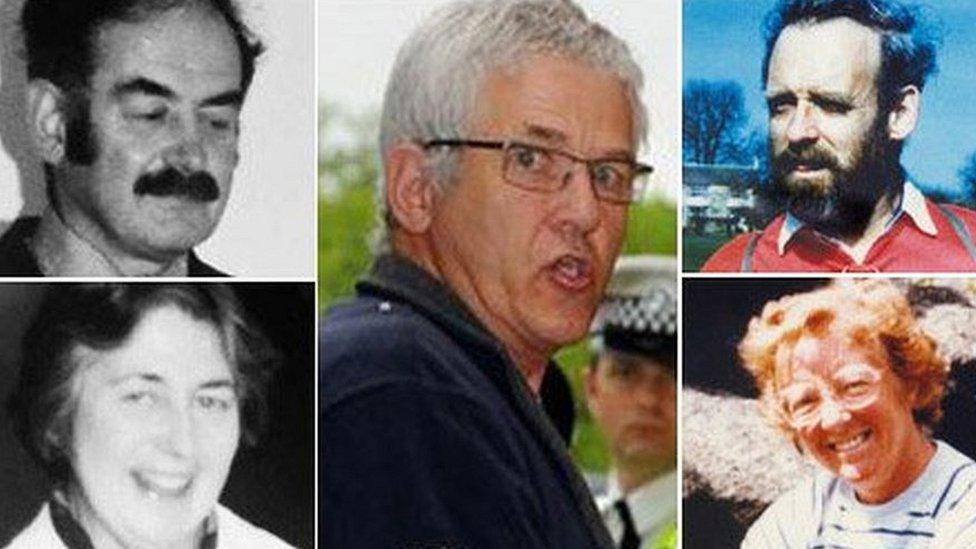
John Cooper (pictured centre) executed Richard and Helen Thomas (left) in 1985 and Peter and Gwenda Dixon (right) in 1989.
In 1989 Cooper also confronted holidaymakers Peter and Gwenda Dixon, aged 51 and 52 and from Oxfordshire, on the Pembrokeshire coastal path near Little Haven and shot them at point blank range after demanding their pin numbers and later raiding their bank accounts.
He was also convicted of separate charges of rape, sexual assault and attempted robbery and jailed for life.
Mr Lenny said: "I vividly remember Cooper shouting at me and the cameraman that he was not guilty. The jury disagreed."
As there is no existing interpretative centre for the Rebecca Riots in west Wales, Mr Lenny believes the court building could fill that gap, becoming a tourist attraction and education centre for local school children with audio-visual displays and exhibitions.
Or it could serve as a branch for the county museum at Abergwili, with 'rolling' displays of artefacts.
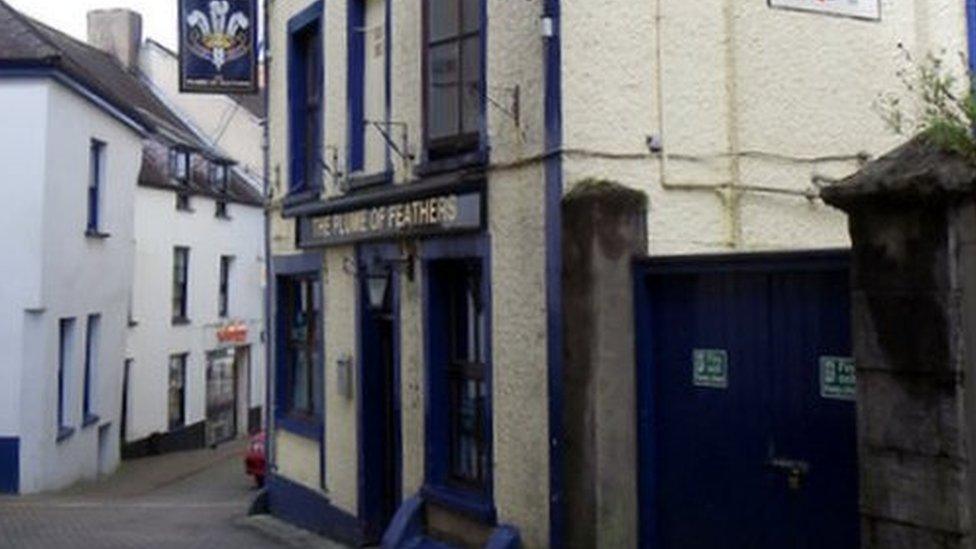
He also recalls that at one time the tiny adjacent pub, The Plume of Feathers, had a door that opened directly into the magistrates' private rooms.
Mr Lenny said: "The magistrates would retire and you would pop round the corner into the Plume of Feathers and you would buy the magistrates a beer and negotiate your punishment. This was back in the 19th century - I couldn't see it working now, but I have seen the door with my own eyes."
Bryn Jones, now 85, was one of the police officers who escorted Ronnie Harries back and forth to the court from Swansea prison during his notorious trial.
Harries was accused of bludgeoning his aunt and uncle to death with a hammer and burying them in a field. He was the last but one man to be sentenced to hanging from the court and was executed inside the prison.
Mr Jones, who served with Dyfed-Powys Police for 38 years and retired as a Ch Supt in 1988, said: "From 1952-55 I was a traffic officer in Carmarthen. In those days we didn't have security firms ferrying people back and forth from court to prison.
"Ronnie Harries was being held in Swansea prison and he had to appear in court every four days and then be taken back again to his cell.

A young Bryn Jones opens the door after meeting Det Supt John Capstick, investigating officer in the Ronald Harries case, from the station
"I know it's a strange thing to say about a convicted murderer but believe it or not he was a very pleasant sort of person, always very chatty in the car.
"One thing I remember is that he said to me and the other officers 'Boys when this is all over, I will take you out for a slap-up meal". Well that never materialised.
"He was talking all the time and acting in a normal way.
"He had a quite a reputation with the ladies and I can well understand that because there was a certain amount of charm about him."
There are various myths about how police caught Harries - from officers stretching cotton across gateways near the farm to check which lengths had been broken and thus pinpointing where the bodies would be found to a buzzard perching on a fence pole near their makeshift grave.
But Ronnie Harries' cousin, Lynn Hughes, is a local historian who recalls how the bodies were discovered by a police officer he knew personally after a search of a nearby kale field.
He said: "Sgt Phillips of Llandeilo noticed that the crops in one particular area of the field were not prospering and ordered the area to be dug up."
Mr Hughes recalls that his older cousin was a "spoilt only child, who had to have everything he wanted right away".
"My father used to race motorcycles in Pendine Sands and we used to call in on Ronnie and his parents, Muriel and John, on the way back for tea.
"He wanted this USA motorbike and had a terrible accident on it where he jumped off one of the narrow lanes and suffered a severe head injury. However, this wasn't taken into account at his trial.
"The motorbike was abandoned and then he had one of the first Land Rovers in Carmarthenshire. He was so persistent, he wore his parents down.
"I remember him taking me for a drive in it and feeling very uncomfortable in his company. He definitely had mental health issues and in modern times would have been sent to an institution rather than be hanged for what he did.
"I didn't go to the trial as I was just a boy of seven and he was a man in his 20s, but I do remember the devastating impact it had on my aunt and uncle."
Mr Jones told how people were perched on top of local buildings for the Harries verdict, such was the local interest in the case.
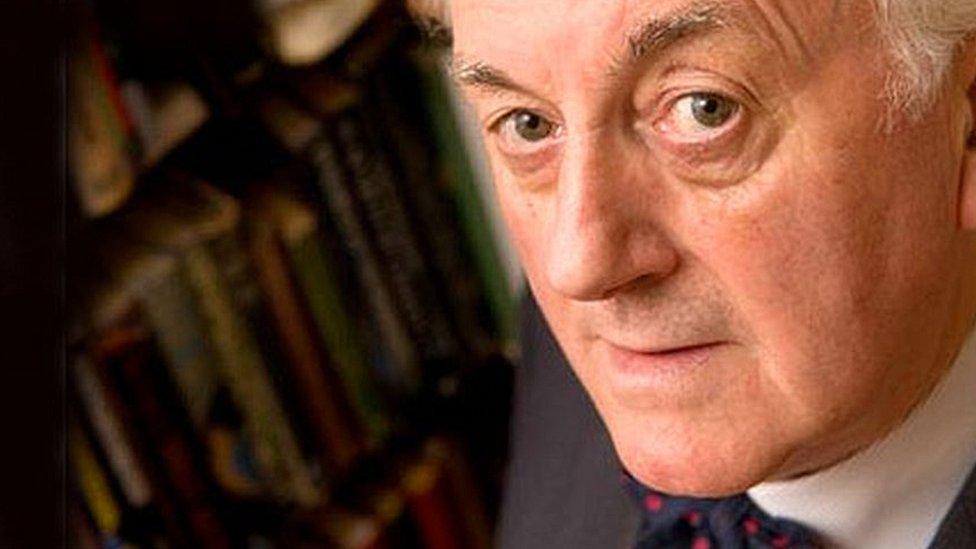
The Rev Towyn Jones
"When the judge put his black cap on, there were people in the window putting their thumbs down to signify that Harries was to be hanged."
He has also researched and written about the part the court played in the sensational 'Kidwelly case' in 1920 when solicitor Harold Greenwood went on trial there for poisoning his wife Mabel with arsenic.
Greenwood was largely believed to be guilty by the local community but was cleared due to the defence and skilful cross-examination of his wife's doctor by his star QC, Marshall Hall.
Mr Hall raised the possibility that Mrs Greenwood had died from an accidental overdose of morphine. His closing speech for the defence was described by the author Gerald Sparrow as "the finest ever heard at the English bar".
Mr Hughes said: "His speech in mitigation is famous in Welsh legal history and the case was the best-known in the Carmarthen court's history.
'Guilty as hell'
"The court was packed for the trial, with spectators arriving by the trainload to hear the arguments."
Mr Jones added: "Emlyn Thomas, a former editor of the Carmarthen Journal, now deceased, was a young reporter during the trial and I remember him telling me it was doubtful because of Marshall Hall's health if he would be able to give his closing speech the following day.
"However, he spoke for almost three hours and was totally brilliant. He quoted Othello more than once during the trial and everybody was transfixed, but Greenwood was furious when Mr Hall left court.
"The only person to leave court at the same time was Emlyn Thomas who chased after him.
"I can only tell you what he told me and that was that when he caught up with Mr Hall somewhere around Queen Street, he asked if Greenwood was guilty or not guilty and according to Emlyn, Mr Hall replied: 'he's as guilty as hell' and off he went.
"Imagine the cheek of questioning the defence counsel like that!"
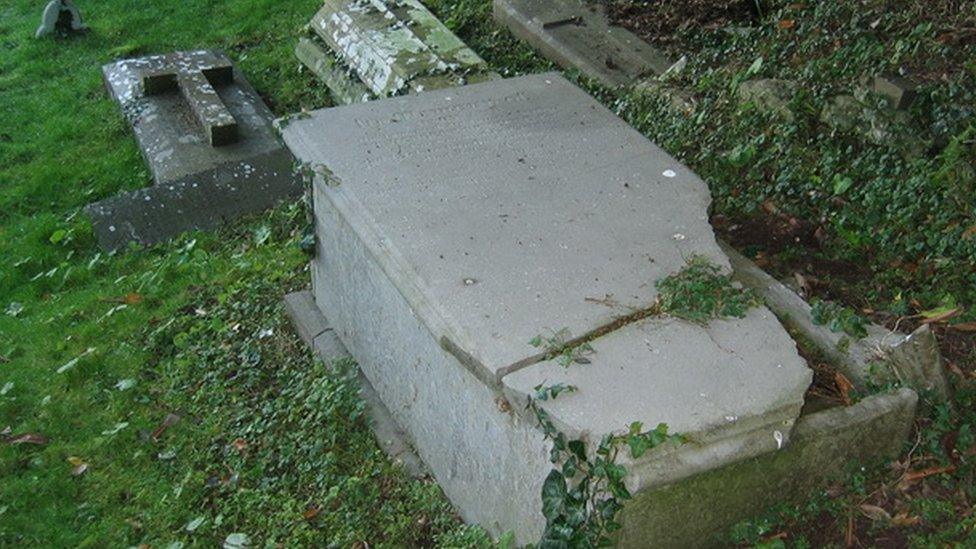
The grave of Mary Ann Severne in Laugharne
Another famous poisoning case which took place at the court was that of cook Betsy Gibbs in 1851. She was accused of poisoning her mistress Mary Ann Severne of Brixton Farm, Laugharne and Mrs Severne's maid, Rebecca Uphill.
In September 1850 Mrs Severne's body was exhumed and the coroner confirmed that their deaths were due to arsenic poisoning.
Newspaper reports from the time cite a wealth of eyewitness evidence against Ms Gibbs, but the packed public gallery was dumbfounded when the jury returned a not guilty verdict.
The Reynolds Newspaper of 13 April 1851 reported that she was targeted by a mob of angry locals when she returned home to Laugharne: "This circumstance still further aroused the popular indignation, and on the night of the 27 Gibbs's effigy was duly suspended upon a gallows, which was erected in front of her dwelling, and afterwards set fire to, amid the exultation of the mob.
"On the following evening a lengthened mock funeral procession paraded up and down the street where Elizabeth Gibbs resided, which, by the bye, has had its cognomen metamorphosed into that of 'Scape-the-Gallows-Street.
"These reiterated annoyances induced her to leave the town, and accordingly she passed through Carmarthen on her way to Merthyr, again exciting the disgust and indignation of a tumultuous assemblage, who crowded to satiate their curiosity by gazing on the woman whom the law had pronounced innocent of the murders which excited their horror."
Over the past 10 years, the crown court has gradually faded away from the town, with the crown cases transferred to Swansea and the magistrates cases transferred to Llanelli.

John Cooper being escorted from Carmarthen court
The recent closure announcement has prompted magistrate and former Carmarthen mayor Richard Goodridge to resign. His association with the court goes back 40 years as his father Stan used to be hall keeper and as a boy he used to go and open up and close with him.
Mr Goodridge, 55, said: "If you look back at the history of the Magna Carta, the whole purpose of the magistrates' courts was that people would be tried by their peers within the locality.
"What they are looking at now is people being tried by computer to save costs, which changes the whole ethos of being brought to court.
"The principle of having to attend court in front of people to answer for your crimes is a big deterrent and being lectured on your wrongdoings by a magistrate is part of that deterrent. It not being done any more will have a big impact. "
Mr Goodridge said that he has resigned from the bench for his own safety.
"I don't have a car and I don't want to travel on the bus or the train to Llanelli and risk sitting in front of somebody whose case I will be hearing," he said.
"There will be cases where witnesses are standing on the same train platform as the people they are giving evidence against and that can't fail but have an impact for justice."
Mr Goodridge believes the court should be handed back to the people of Carmarthen as it was originally transferred free to the court service.
'Travesty of justice'
He is also concerned about what will happen to the three bronze bells that the town's late chemist Gwynne King Morgan donated to the people of Carmarthen which were installed in the late 80s and early 90s.
He added: "Cardigan, Newcastle Emlyn, Llandovery, Ammanford, Whitland, St Clears, Narberth, Haverfordwest, and others have all had their court buildings closed and sold off to the highest bidder, many since falling into disrepair. This must not be allowed to happen here.
"It's been a travesty of justice and a justice that no longer exists in the local community."
Juliana Hughes, a magistrate in the area for 25 years, who has since retired, said: "It's a really beautiful court which adds to the dignity of the court proceedings and the seriousness of the hearings.
"I've sat in Llanelli several times and it just doesn't have the same feel to it," she said.
"It will take away the idea of local justice which was the main idea behind magistrates' courts, that local justice would be administered by local people.
"It's changed the whole ethos of the magistrates' courts and it's becoming a sphere where the people who practice the law are the only people who have any say."
Mrs Hughes has seen many smaller courts close in her time, including St Clears which was once a miniature version of the Carmarthen court and used to be attached to the police station.
The century-old police court house in Bargoed, near Caerphilly, closed in 1997 but is now a town hall, while a new family-run supermarket is to be built on the site of the former Barry Magistrates' Court, creating 40 jobs in the town.
The operating costs for Carmarthen Law Courts were approximately £162,000 for the financial year 2014-15.
'Urgent reform'
The Ministry of Justice argues that public transport links are good and regular local bus services link Carmarthen to local population centres.
It says that Llanelli is a multi-jurisdictional court, which has the capacity to accommodate Carmarthen's criminal workload.
It also argues that the court building is not compliant with the Equality Act 2010 and there is inadequate separation of victims, witnesses and defendants, inadequate judicial and juror segregation, with poor facilities for witnesses and victims.

Due to the absence at the site of a modern vehicle dock, prisoners are delivered to the building via the public pavement outside of the premises.
Justice Minister Shailesh Vara said: "Our courts and tribunals system is in need of urgent reform. Maintaining our underused and dilapidated court buildings costs the taxpayer £500m million a year but some courts sit for less than half the time available.
"This is simply unsustainable. Closing these courts in poor quality buildings will raise £40m to re-invest in the justice system, and save hard-working taxpayers £27m per year.
"The decision to close a court will never be taken lightly, but in the digital age I am confident we have measures in place to ensure access to justice is not diminished."

- Published11 February 2016
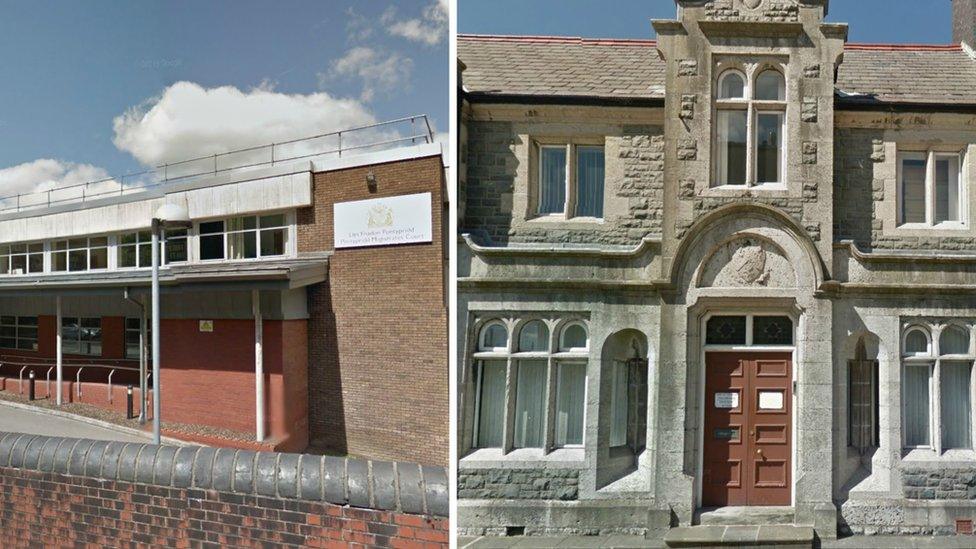
- Published1 September 2015
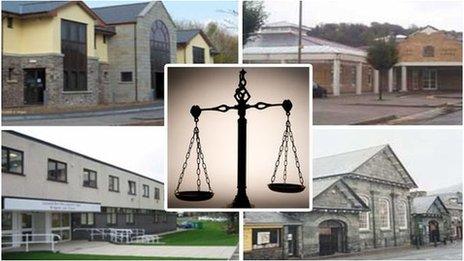
- Published17 August 2015
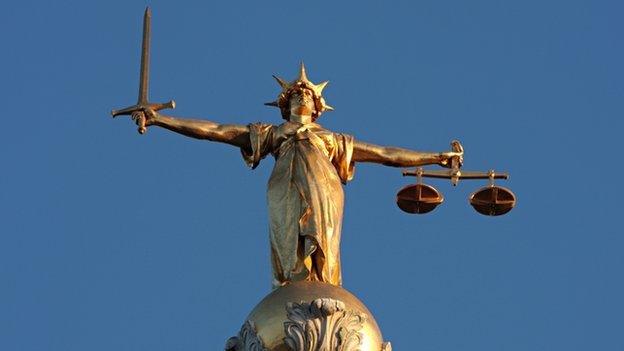
- Published16 July 2015
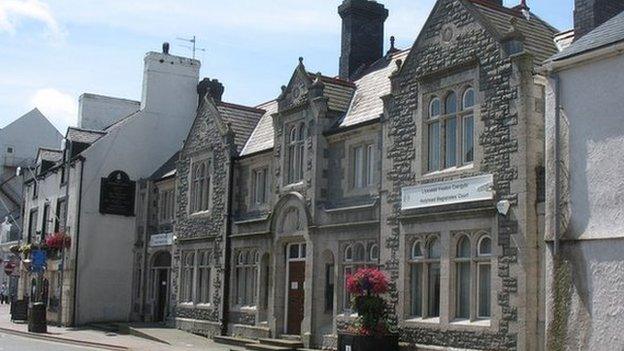
- Published28 June 2014
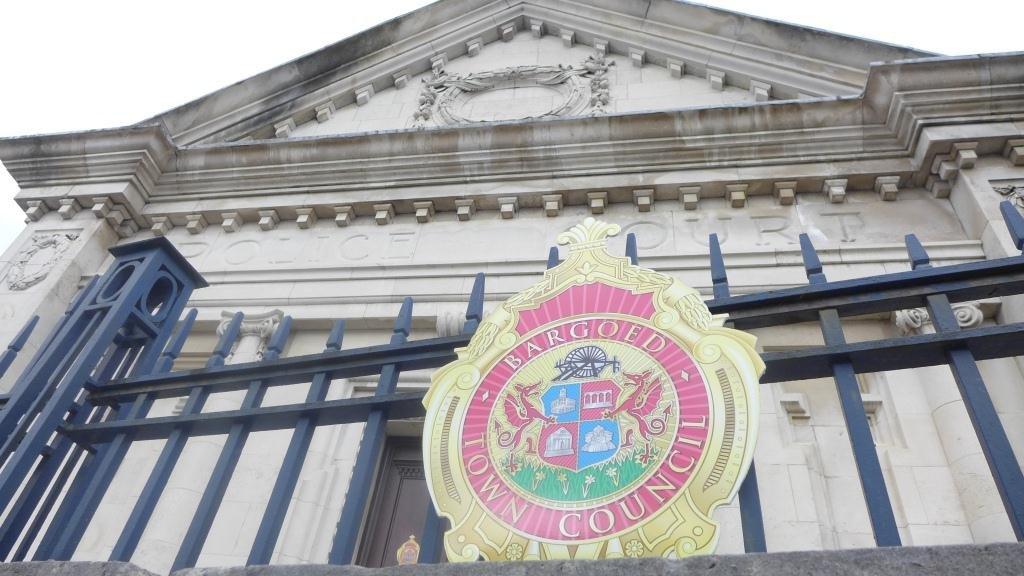
- Published23 November 2011
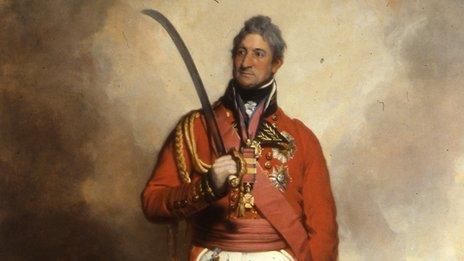
- Published26 May 2011
